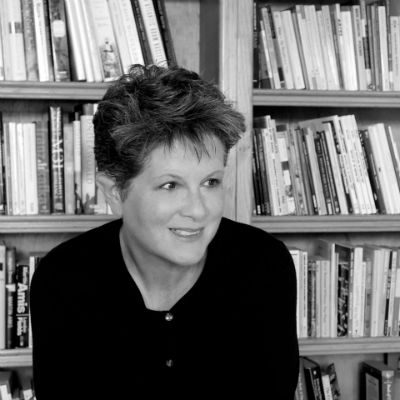Transforming Patricia Highsmith for the big screen.
Phyllis Nagy is a successful playwright, screenwriter and director whose latest screenplay is Carol, a movie starring Cate Blanchett and Rooney Mara, directed by Todd Haynes and premiering at the Cannes Film Festival in May. Nevertheless, like most screenwriters her name and career aren’t well known (she’s New York born and now lives in LA) even though, by any standards of movie- and theatre-making, they’re impressive.
She says, “Thanks for noticing. You would not believe the number of 20-something US film types who, in all seriousness, congratulate me on my ‘budding’ career!”
In 1992, already the recipient of a National Endowment for the Arts Playwriting Fellowship, Nagy moved to London. There the Royal Court Theatre’s then artistic director Stephen Daldry appointed her writer-in-residence; she won multiple awards and her work was produced in theatres all over the UK and elsewhere.
In 1999 she dramatised Patricia Highsmith’s The Talented Mr Ripley and then, in 2005 after returning to the US, she wrote and directed the telemovie Mrs Harris. It picked up 12 Emmy nominations, a handful of Golden Globe and other noms too.
“She loved him so she shot him” was the promo line for real-life WASP headmistress Jean Harris putting a bullet in her Scarsdale Diet lover Herman Tarnower after he abandoned her for a younger woman. (Annette Bening and Ben Kingsley starred.)
Nagy’s plays and screenplays explore the intricacies of identity, gender and family relationships and are populated with transgressors and sharp lines. No surprise then that she was commissioned to adapt her second Highsmith novel.
Carol – by Patricia Highsmith but first published under a pseudonym in 1952 as The Price of Salt – is about Carol (Blanchett): wealthy, sophisticated and unhappily married. In a New York city department store she meets Therese (Mara) a young woman whose ambition is to be a theatre set designer, but who is working in the toy department.
Their friendship is unlikely, their love affair even more so as it grows during a spontaneous road trip west. It’s romantic and exciting, but it’s also the 1950s when lesbians didn’t live happily ever after. Yet, this is Highsmith and nothing is at it seems…
How did Nagy approach the novel – fine-drawn and elliptical – to translate it into the visual medium? Said Nagy, via email from LA: “Novels that appear to be nothing but oblique angles and subtlety – including most of Highsmith’s novels – are among the most satisfying to adapt. Their central characters tend to be mosaics built on tone and mood, loners engaged in internal monologues of one kind or another rather than on ‘action’ in the traditional sense.
“It’s a gift to work with material like that. The screenwriter augments and gives shape to the seemingly shapeless in such works – of course, they’re not actually shapeless characters, visuals and situations. They need coaxing out of their shells…”
Did she know she was writing for superstar Blanchett when she began?
“No, I was commissioned to write Carol long before there was any hint … had there been when I started, my approach to the material would not have changed. Having said that, sometimes knowing who will play a role when you’re in various stages of rewriting does tend to affect the rhythms and nature of the dialogue – you find yourself writing to the strengths of the actor, while still honoring the whole, but this tends to be largely subconscious. Or automatic.”
The resulting movie has been long awaited and much anticipated, so does this mean Nagy is now lost to theatre-making?
“No plans for this in the immediate future,” says Nagy. “And as the ‘development process’ for plays edges increasingly closer to its equivalent film model, I can’t say the prospect appeals.”
